If you're using Windows 11 and have concerns about certain files or folders appearing in search results, there are ways to keep them hidden. Whether it's for privacy reasons, to prevent accidental deletion, or to enhance search performance by excluding large files, Windows 11 offers various methods to hide your content from search.
In this guide, we'll explore effective techniques to hide files, folders, drives, and specific file types from Windows 11 search results. We'll cover methods using Settings, Indexing Options, File Explorer, Command Prompt, and more.
Methods to Hide Files and Folders in Windows 11
There are several approaches to prevent files and folders from appearing in Windows 11 search results. Below are some of the most effective methods.
Hide Files and Folders Using File Explorer
One of the simplest ways to hide files or folders is by adjusting their properties in File Explorer. This method allows you to apply a hidden attribute to any file or folder, making it invisible in search results and in File Explorer (unless configured otherwise).
Step 1: Open File Explorer and navigate to the file or folder you wish to hide. Right-click on it and select Properties from the context menu.

Step 2: In the General tab of the Properties window, check the Hidden option. Click Apply.

Step 3: A confirmation dialog will appear asking if you want to apply the changes to just the folder or to include all subfolders and files. Select Apply changes to this folder, subfolders, and files if you wish to hide everything within the folder. Click OK.
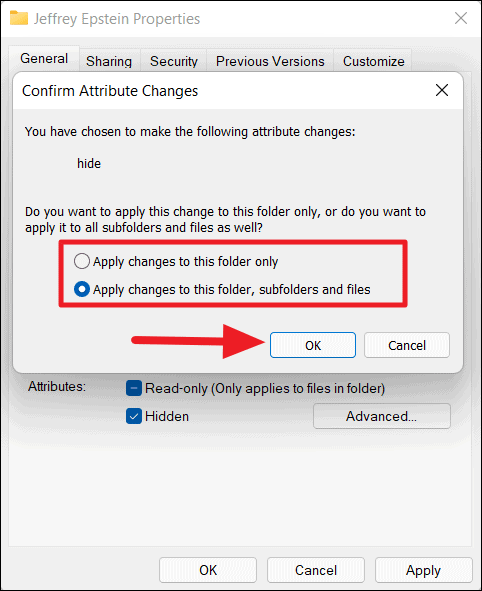
Step 4: The folder and its contents are now hidden. If you still see faint icons (ghost icons), you may need to adjust your Folder Options. Click the See more button (three dots) at the top of File Explorer and select Options.

Step 5: In the Folder Options window, go to the View tab. Under Advanced settings, select Don't show hidden files, folders, or drives. Click Apply and then OK.

The hidden files and folders will no longer be visible in File Explorer or appear in search results.
Hide Files and Folders Using Settings
You can also exclude specific folders from Windows Search through the Settings app.
Step 1: Right-click on the Start menu and select Settings, or press Windows+I to open the Settings app.

Step 2: In Settings, click on Privacy & security on the left sidebar, then select Searching Windows on the right pane.
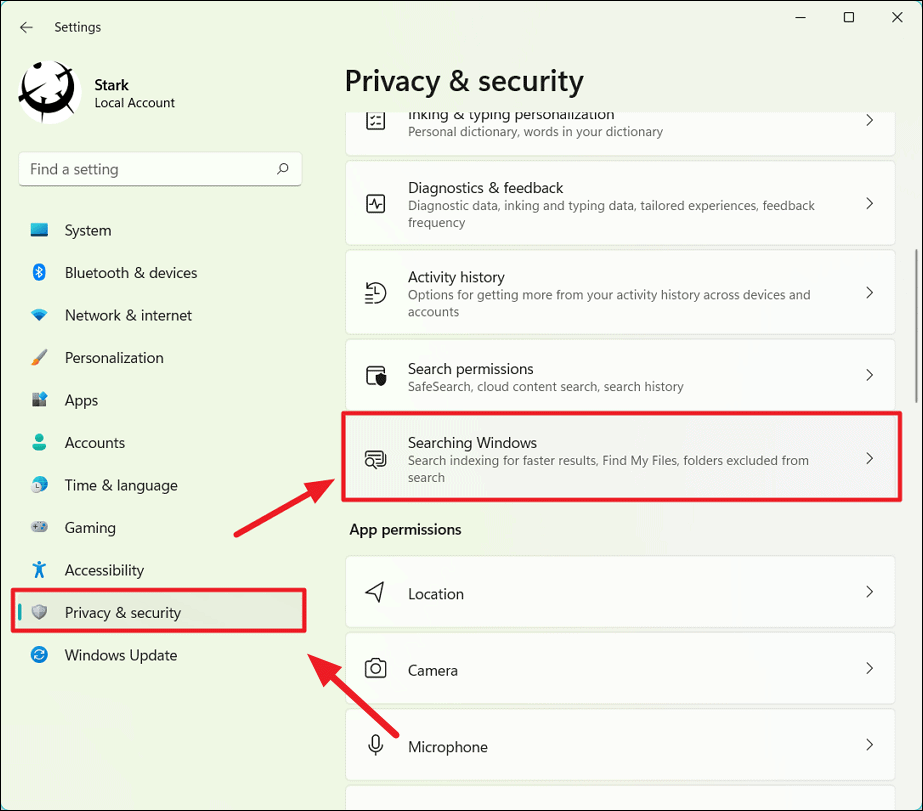
Step 3: Under the Exclude folders from enhanced search section, click on Add an excluded folder.

Step 4: Navigate to the folder you want to exclude, select it, and click Select Folder.

The selected folder is now excluded from Windows Search and won't appear in search results.
Hide Files and Folders Using Indexing Options
Windows Search relies on an index to provide quick search results. By modifying the indexing options, you can exclude specific folders or file types from search results.
Step 1: Open the Start menu, search for Indexing Options, and select it from the results.
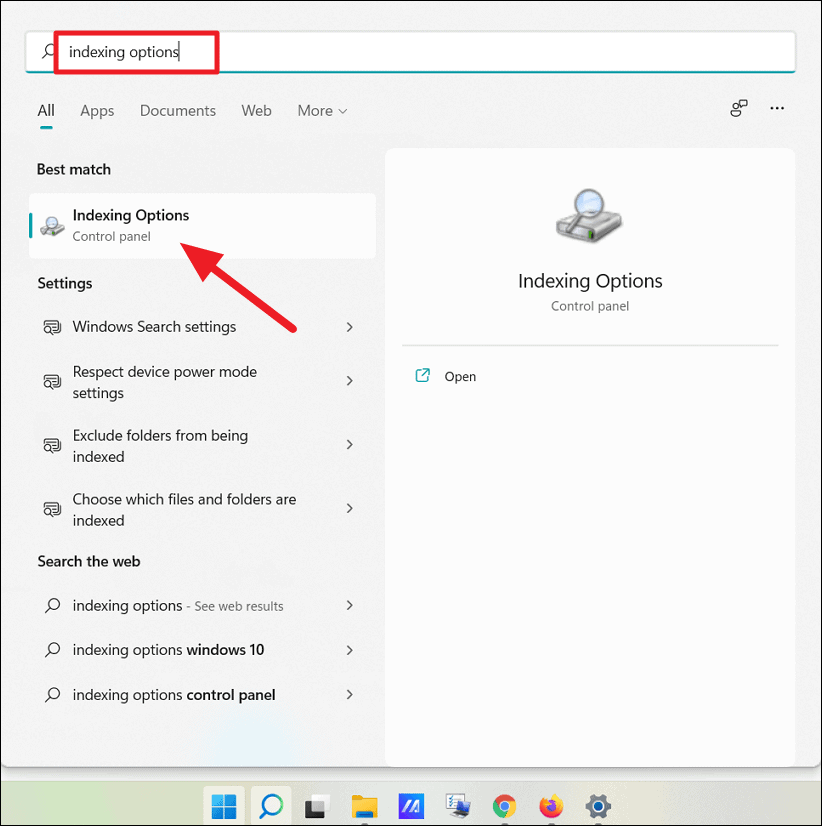
Step 2: In the Indexing Options window, click on Modify.
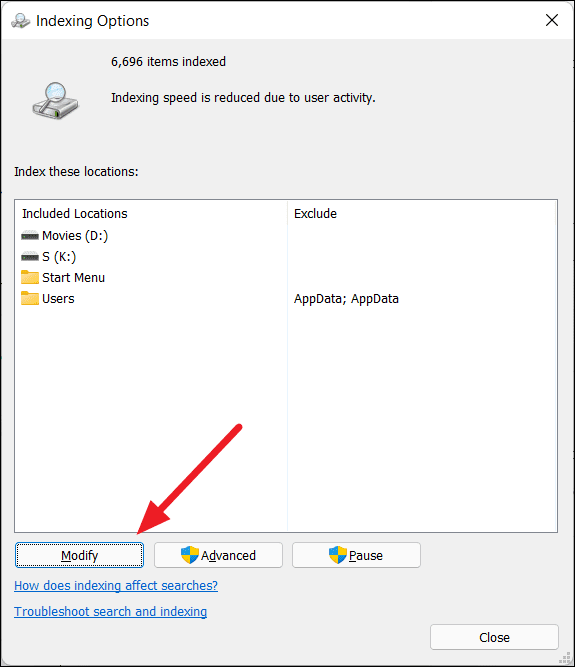
Step 3: In the Indexed Locations window, uncheck the folders you want to exclude from the index. This will hide them from search results. Click OK.

Step 4: Back in the Indexing Options window, click on Advanced.
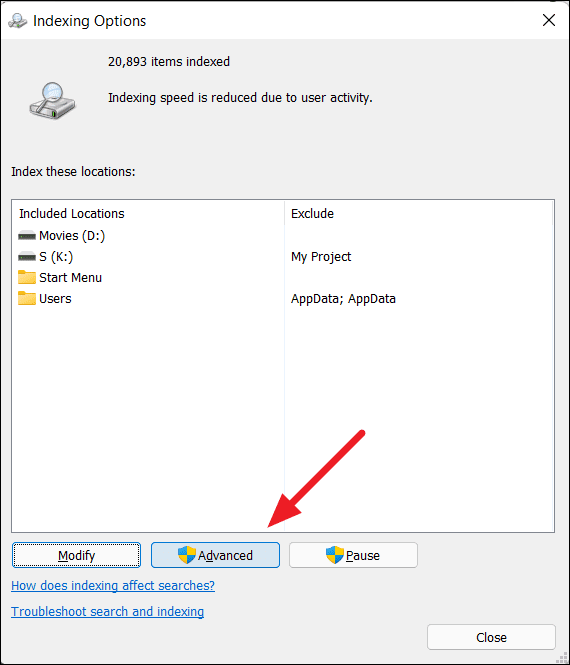
Step 5: In the Advanced Options window, click on Rebuild under the Troubleshooting section to rebuild the index.

After the indexing is complete, the excluded folders will not appear in search results.
Hide Specific File Types from Search Results
If you want to prevent certain file types from appearing in search results (e.g., all PDF files), you can modify the indexing options to exclude those file types.
Step 1: Open Indexing Options from the Start menu.
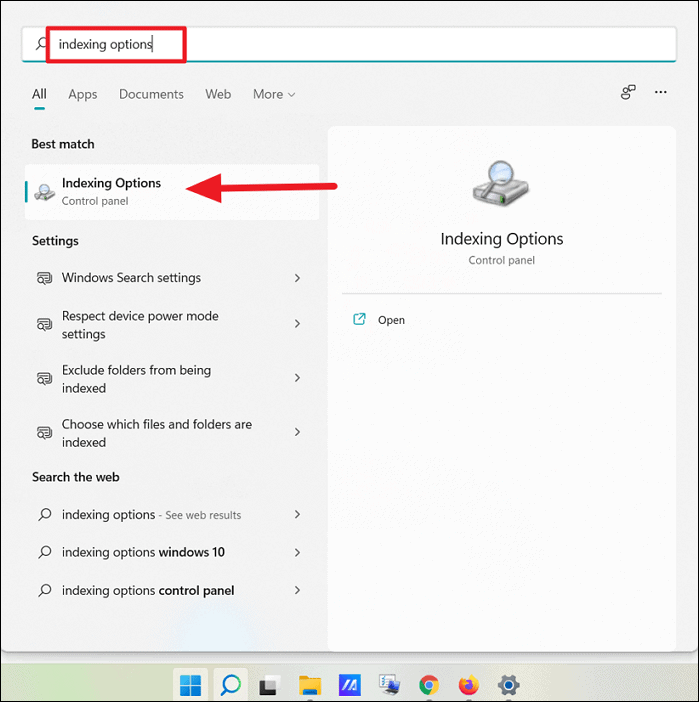
Step 2: Click on Advanced in the Indexing Options window.

Step 3: In the Advanced Options window, go to the File Types tab. Uncheck the file extensions you want to exclude from search results (e.g., uncheck pdf). Click OK.

Step 4: Back in the Advanced Options window, click on Rebuild to update the index.
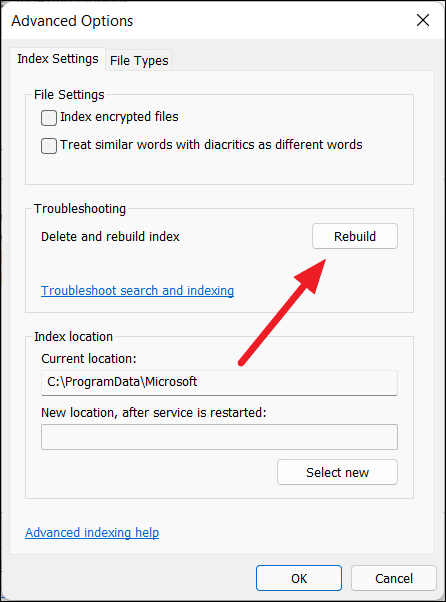
Once the indexing process is complete, the specified file types will no longer appear in search results.
Hide an Entire Drive
If you need to hide an entire drive from File Explorer and search results, you can do so using Disk Management.
Step 1: Right-click on the Start menu and select Disk Management, or press Windows+R, type diskmgmt.msc, and press Enter.
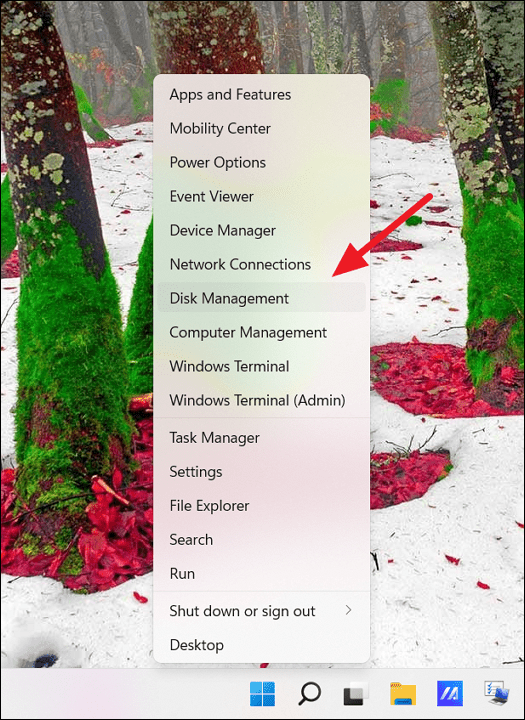
Step 2: In Disk Management, locate the drive you want to hide. Right-click on it and select Change Drive Letter and Paths....

Step 3: In the dialog that appears, select the drive letter and click Remove.
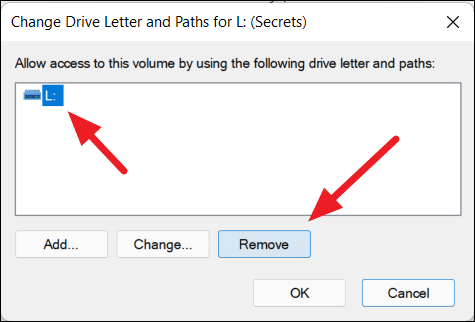
Step 4: Confirm by clicking Yes when prompted about potential issues.
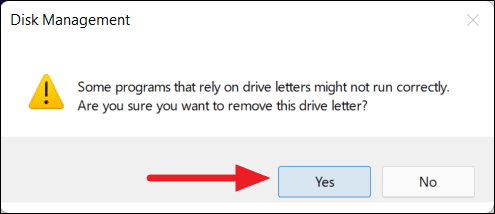
The drive will no longer appear in File Explorer or in search results.
Hide Files and Folders Using Command Prompt
For advanced users, the Command Prompt provides a way to hide files and folders using the attrib command.
Step 1: Open Command Prompt as an administrator. Search for cmd in the Start menu, then click Run as administrator.

Step 2: Navigate to the directory containing the file or folder you want to hide. Use the cd command. For example:
cd /d K:\My Secret SocietiesThe /d switch allows you to change the drive as well as the directory.
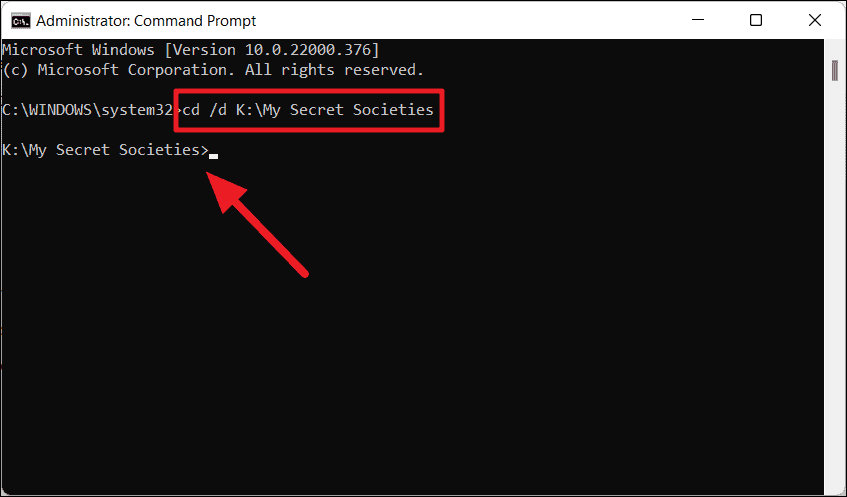
Step 3: Use the attrib command to hide the file or folder:
attrib +h "Folder Name"Replace "Folder Name" with the name of your folder.
attrib +h "Illuminati Files"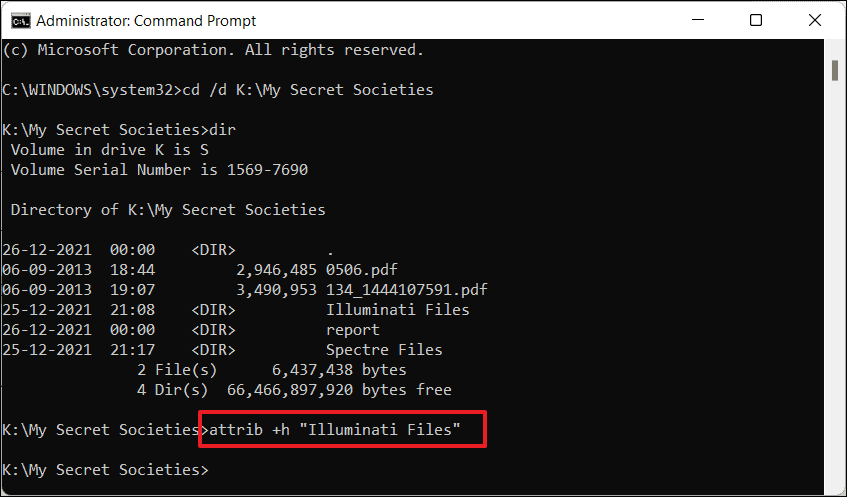
The folder is now hidden and won't appear in File Explorer or search results.
Step 4: To hide all subfolders and files within the hidden folder, navigate into the folder using:
cd "Illuminati Files"Then run:
attrib +h /s /d
This command applies the hidden attribute to all files and subdirectories within the current directory.
Methods to Unhide Files and Folders in Windows 11
If you need to access or restore visibility to hidden files and folders, you can unhide them using the following methods.
Unhide Hidden Files and Folders in File Explorer
Step 1: Open File Explorer and click on the See more button (three dots). Select Options.

Step 2: In the Folder Options window, go to the View tab. Under Advanced settings, select Show hidden files, folders, and drives. Click Apply and then OK.
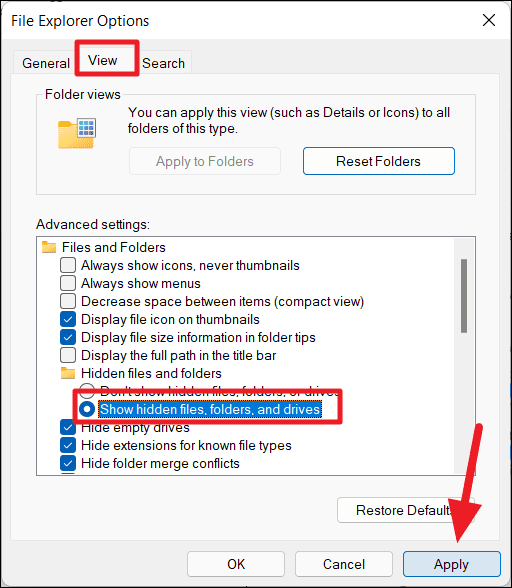
The hidden files and folders will now be visible, but with faded icons indicating they are still marked as hidden.
Step 3: To fully unhide a file or folder, right-click on it and select Properties.

Step 4: In the Properties window, uncheck the Hidden attribute. Click Apply.
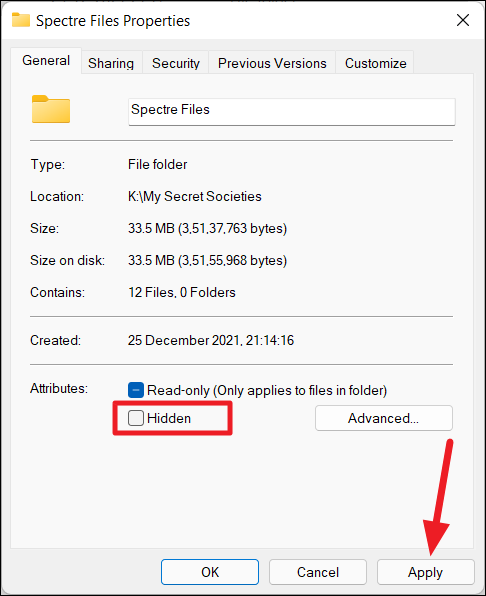
Step 5: Choose whether to apply the changes to just the folder or to include all subfolders and files. Click OK to confirm.

The file or folder will now be fully visible and will appear in search results.
Unhide Files and Folders Using Indexing Options
If you previously excluded folders from the search index, you can include them again to make them searchable.
Step 1: Open Indexing Options from the Start menu.
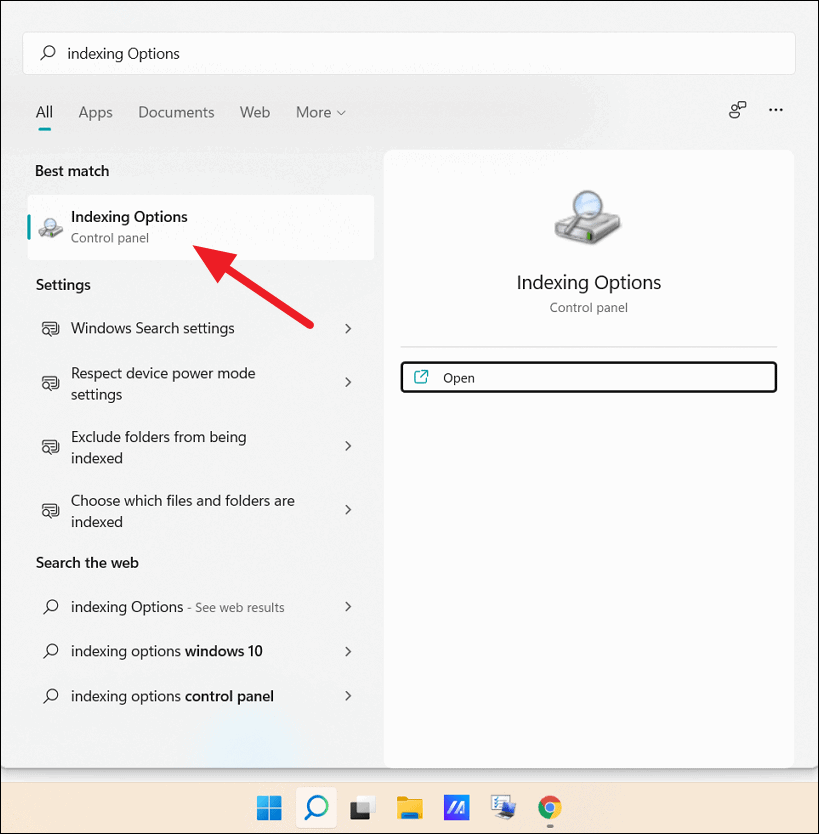
Step 2: Click on Modify and check the folders or drives you want to include in the index. Click OK.

Step 3: In the Indexing Options window, click on Advanced, then click Rebuild to update the index.

After rebuilding the index, the previously hidden files and folders will appear in search results.
Unhide an Entire Drive
If you've hidden a drive and want to make it visible again, you can reassign a drive letter using Disk Management.
Step 1: Open Disk Management by right-clicking the Start menu and selecting Disk Management.
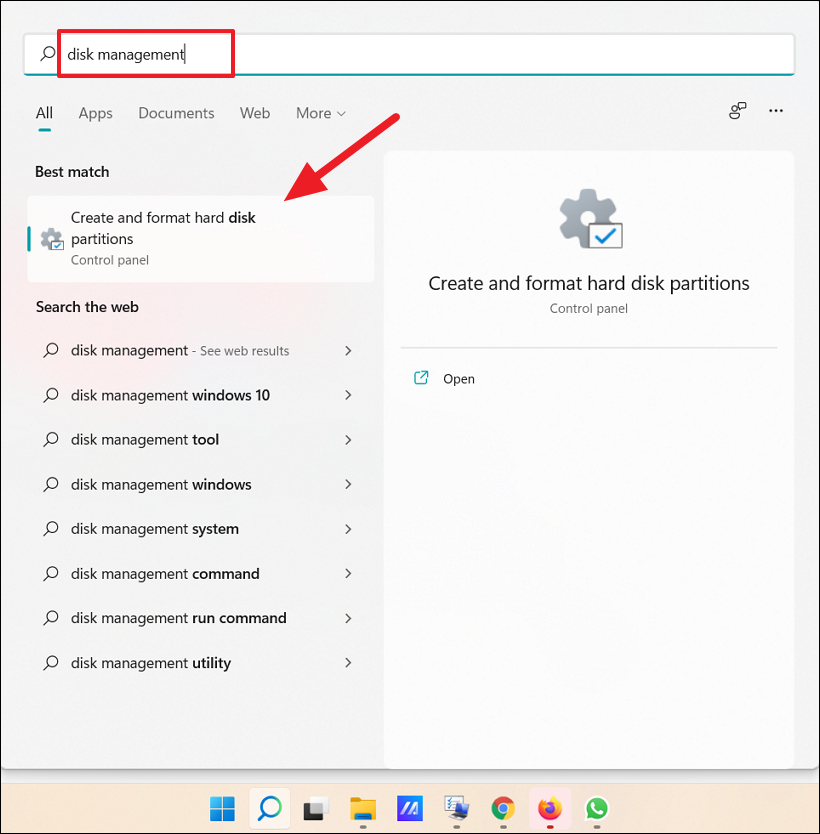
Step 2: Locate the hidden drive, right-click on it, and select Change Drive Letter and Paths....
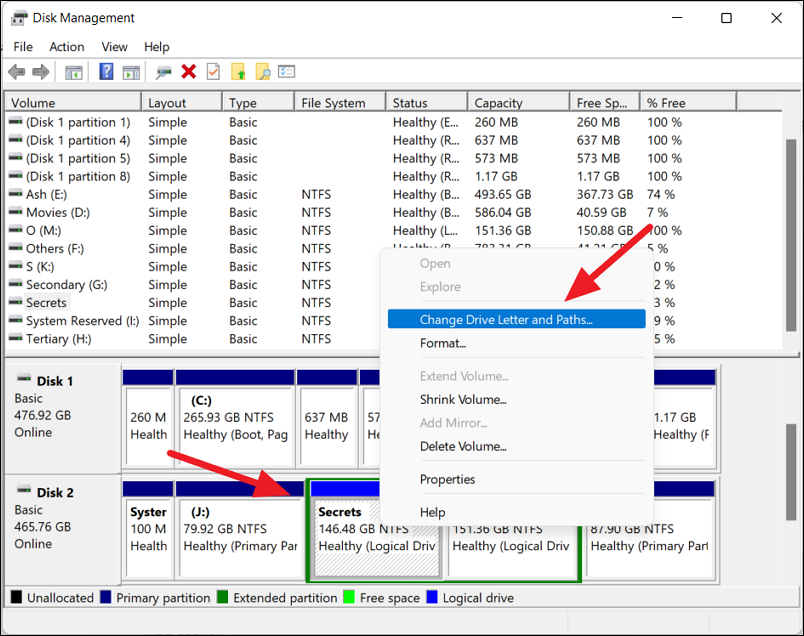
Step 3: Click on Add, choose a drive letter from the drop-down menu, and click OK.
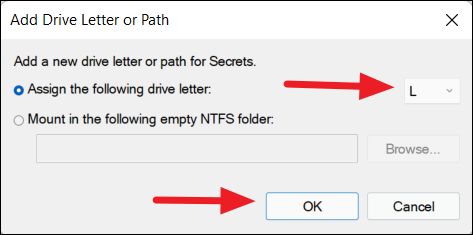
The drive will reappear in File Explorer and be accessible as before.
Unhide Files and Folders Using Command Prompt
If you hid files or folders using Command Prompt, you can unhide them using similar commands.
Step 1: Open Command Prompt as an administrator.
Step 2: Navigate to the directory containing the hidden file or folder:
cd /d K:\My Secret Societies
Step 3: Unhide the file or folder using:
attrib -h "Folder Name"Replace "Folder Name" with the actual name.
attrib -h "Spectre Files"
Step 4: To unhide all files and folders within, navigate into the folder:
cd "Spectre Files"Then run:
attrib -h /s /d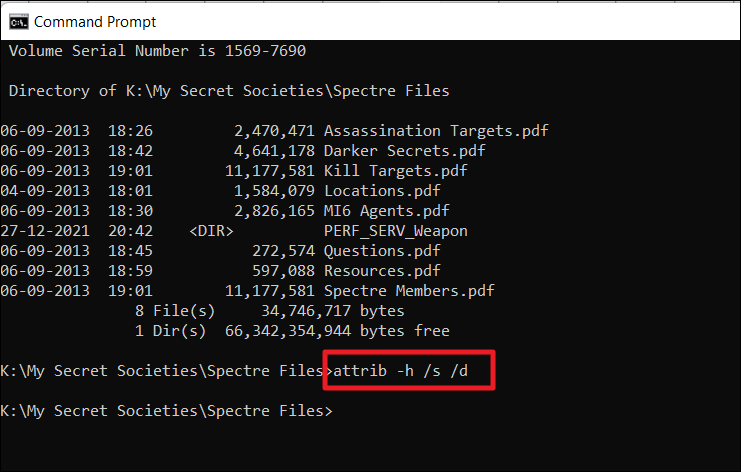
This command removes the hidden attribute from all files and subdirectories.
By utilizing these methods, you can effectively manage the visibility of your files, folders, and drives in Windows 11, ensuring your data remains private and your search experience is optimized.











Member discussion